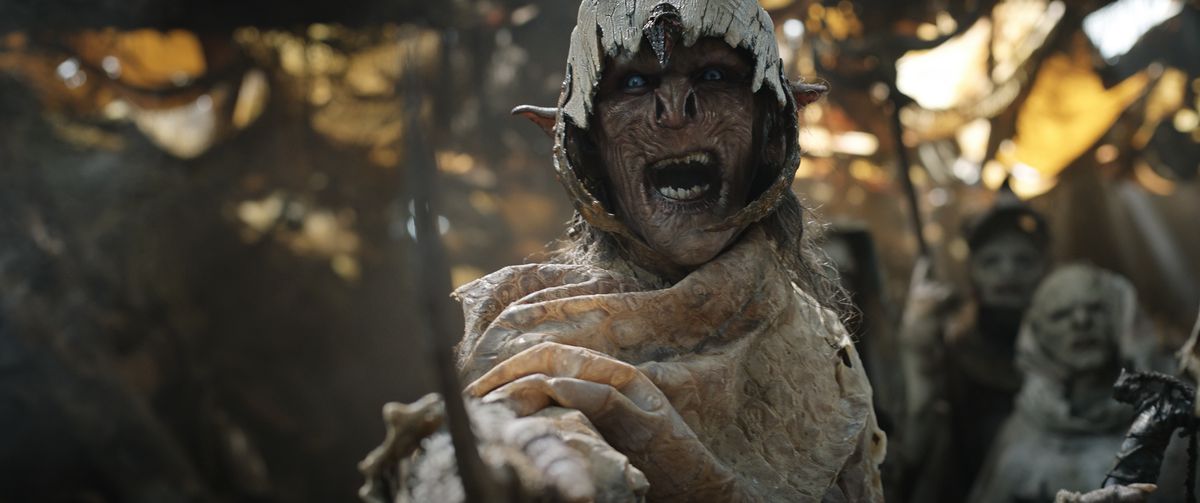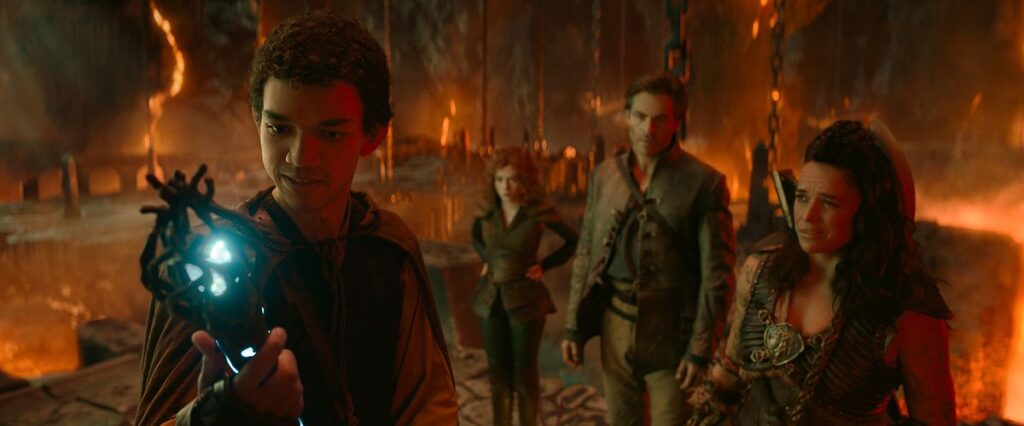Dungeons & Dragons: Honor Among Thieves is chock-full of references aimed directly at the most dedicated D&D players. But it has at least one thing all audiences can enjoy: an unexpected, utterly absurd cameo from a well-known actor.
With all cameos, less is more. But in the rules of Dungeons & Dragons, where every person has a set of numerical statistics associated with, for example, how well they can flirt, even the briefest appearance can inspire curiosity.
So let’s categorize Honor Among Thieves’ big — well, OK, not big, but genuinely funny cameo.
[Ed. note: This post contains spoilers for Dungeons & Dragons: Honor Among Thieves.]
Image: Paramount Pictures
Honor Among Thieves’ little surprise is the sudden appearance of Bradley Cooper. He’s an actor well known for playing a different diminutive character, but this cameo is a smaller role in every sense. When our gold-hearted adventurers drop by the old stomping grounds of Holga the barbarian (Michelle Rodriguez), she visits the home she once shared with her ex-husband Marlamin in an attempt to rekindle what they once had.
Here, Honor Among Thieves reveals two things: First, Marlamin is played by Bradley Cooper. Second, Marlamin is only about 3 feet tall. The comedy of the scene lies in the way Cooper and Rodriguez maintain painstakingly straight faces as they discuss the dissolution of their relationship, and the fact that Marlamin has moved on. These are, in fine romantic-drama style, two people who sacrificed everything to be together, then realized they weren’t that compatible at all. It’s just that one of them is a fur-and-leather-wearing barbarian, and the other is a guy whose wee legs are dangling off the seat of his human-size armchair.
Honor Among Thieves doesn’t hang out with Marlamin long enough to explicitly call out his species in the way it does for half-elf Simon or tiefling Doric. What is this small dude meant to be, within the Dungeons & Dragons canon? It’s up to us, the staff of Polygon, the nexus of gaming and entertainment, to make our own call — applying the canonical descriptions from the Player’s Handbook of Dungeons & Dragons 5th edition, the source book the world of Honor Among Thieves was derived from.
Bradley Cooper’s D&D movie character is a halfling

We feel pretty confident that the directors of Honor Among Thieves — Jonathan Goldstein and John Francis Daley — intended Marlamin to read as a halfling.
Here are some direct quotes from how 5th edition D&D describes this species:
- Standing about 3 feet tall, [halflings] appear relatively harmless.
- They like to wear simple, comfortable, and practical clothes, favoring bright colors.
- They cherish the bonds of family and friendship as well as the comforts of hearth and home, harboring few dreams of gold or glory.
- Many halflings live among other races, where the halflings’ hard work and loyal outlook offer them abundant rewards and creature comforts.
If we had to get really specific, we’d say that Marlamin is more likely to be a Stout Halfling than a Lightfoot, as Lightfoot halflings are “more prone to wanderlust than other halflings,” and Marlamin is clearly a homebody who couldn’t reconcile himself to Holga’s traveling lifestyle. (Although Lightfoots also “often dwell alongside other races,” so it’s anybody’s guess.)
If he’s a Stout Halfling, he gets some resistance to poison and a slightly better constitution score; if he’s a Lightfoot, he’s better at sneaking and is slightly more charismatic. These are facts that we’re sure have enhanced your viewing experience of Honor Among Thieves.
But wait, he’s wearing shoes. I thought hobbits don’t wear shoes?

Image: New Line Cinema
Ah ah ah! There’s a huge difference between hobbits, created by J.R.R. Tolkien, and the halflings that appear in Wizards of the Coast’s Dungeons & Dragons tabletop role-playing games and licensed media based on them.
You see, the Tolkien Estate owns the rights to hobbits, who have hairy feet and don’t wear shoes.
And Wizards of the Coast publishes material with halflings, who do wear shoes over their unremarkably hairy feet.
If you’d like further clarification on this matter, just ask any attorney working for Wizards of the Coast.
Oh, come on — maybe Marlamin is a gnome?
You could certainly make that argument. D&D’s 5th edition describes gnomes as standing “slightly over 3 feet tall,” just like Marlamin, and gnomes are more likely to have facial hair, like Marlamin, than the generally barefaced halflings.
But they’re also described as wearing elaborately styled beards and speaking “as if they can’t get the thoughts out of their heads fast enough.” According to the Player’s Handbook, unless a gnome is the adventurous sort, they’ll probably live in a hidden, underground gnomish community rather than finding fellowship with other species.
Gnomish traits simply don’t fit the gentle, patient, homebody qualities we see in Marlamin, everything that made him such a poor match for Holga.
So he’s probably a halfling.
Hang on — isn’t this all reductive, bordering on racist?

Image: Prime Video
What, universally ascribing specific physical and psychological qualities to all people of a certain origin? Unequivocally yes. It’s a foundational crack in the fantasy genre, one that tabletop role-playing games have had a not-insignificant hand in perpetuating.
Fortunately, it’s something Wizards of the Coast has slowly come to address, both by retrofitting 5th edition D&D with later updates and in the development of future rulesets for the game, which will reportedly emphasize that all species in Dungeons & Dragons come with the same beautiful variability as our actual real-life human species does.
From the standpoint of story and film analysis, though we can take a good guess at which D&D species the creators of Dungeons & Dragons: Honor Among Thieves intended Marlamin to read as. But if he was a real person, we’d certainly hope that nobody would crouch down next to him and ask, “OK, but, so, like, where are you, y’know, from?”

